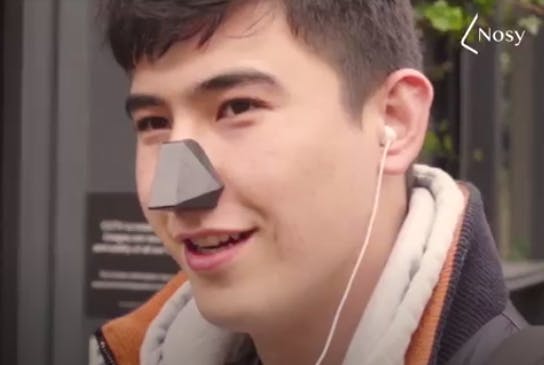Another day, another wacky idea to combat air pollution.
A nose-mounted air filtration device branded ‘Nosy’ is the latest invention aimed at tackling an environmental problem that kills 7 million people a year.
The brainchild of Brazilian business executive and former model Carina Cunha, the new pollution-buster is promoted as a fashionable, sustainable alternative to disposable face masks, which Nosy’s creators say are ineffective because they do not have a perfect seal around the face.
Launched during the ongoing Covid-19 pandemic, Nosy’s creators point to research that shows that air pollution puts people at greater risk of contracting the coronavirus.
Designed by former engineers at electronics firm Dyson, the Nosy is reusable and washable, and has a lifespan of “multiple years”. It has two replaceable filters, a high-efficiency particulate air (Hepa) filter to remove fine particles and a carbon filter to remove volatile organic compounds.
It is also supposedly recyclable; the shell is made from bioplastic, the seal from silicone, and the magnetic clip from a metal alloy.
Although the device does not cover the mouth, Nosy’s creators claim that it can filter 90 per cent of all air the user breathes. A company spokesperson told Eco-Business that most people breathe through their nose not mouth, and the aim of the device was for it to be comfortable and worn for prolonged periods of time.

A wearer of Nosy, a device that is supposedly more effective than a face mask at reducing air pollution exposure. Image: Nosy
“Even if you were to breathe through your mouth 5 to 10 per cent of time (which is extremely rare), you would end up inhaling a lot less pollution from wearing a Nosy for several hours everyday, rather than just putting on your N95 mask [the most widely used anti-pollution mask] when pollution is dire outside,” the spokesperson said.
Daniel Kass, senior vice-president for environmental health for New York-headquartered air quality campaign group Vital Strategies, is not convinced that the device will work. Kass, who has 30 years of experience in public health policy, enforcement and research, said it would be fun to write the user manual for the device:
“User warning: Do not sneeze; Contraindications: breathing normally through the mouth; One size fits all, except well, you know who you are…; Cleaning instructions: remove from nose, hold your nose, rinse gunk; Optional accessories: neck tether, superglue to be applied to upper and lower lips before using.”
The invention has launched a page on fundraising platform Kickstarter, and has so far raised more than £15,000. It aims to raise £22,500. It comes in three different colours and retails for £65 (US$80).
The Nosy is the latest is a series of anti-air pollution ideas that have been questioned by air pollution experts, including the RepAir t-shirt, whose makers claim can trap the emissions of two cars, and Gush, an “air purifying” paint made in Singapore.

















